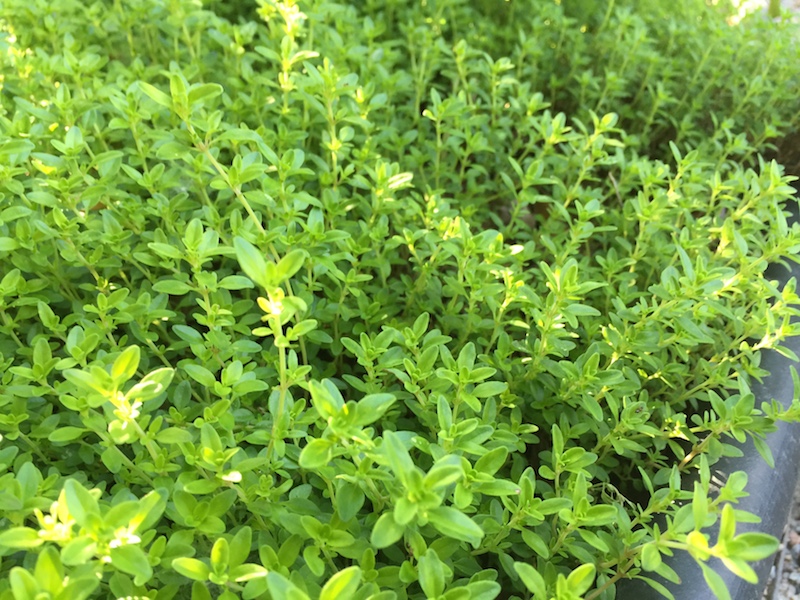Thyme
Thyme, Thymus
Thyme is a popular culinary herb used in soups, stews and casseroles, and with roasts. It also makes for an excellent landscaping plant as a groundcover, stepping stone plant or edging plant.

Growing
Thyme prefers full sun. The soil should be of poor to average fertility, neutral to alkaline and very well drained. It is beneficial to work compost and expanded shale into the soil. Do not overwater; plants that sit in wet soil or receive too much irrigation will die out.
Once thymes finish flowering, shear them back by about one-half to encourage new growth and prevent them from becoming too woody.
Tips
Thymes work well at the front of borders, between or beside paving stones, in rock gardens, on rock walls and in containers. Creeping thyme makes a good lawn substitute for areas with reduced foot traffic.
Recommended
T. x citriodorus (lemon-scented thyme) forms a mound of lemon-scented, dark green foliage with pale pink flowers. Cultivars with silver- or gold-margined leaves are available.
T. praecox subsp. arcticus (T. serpyllum; mother of thyme, creeping thyme, wild thyme) is a low-growing variety with purple flowers. Many cultivars are available. ‘Elfin’ forms tiny, dense mounds of foliage. ‘Lanuginosis’ (wooly thyme) is a mat-forming selection with fuzzy, gray-green leaves and pink or purple flowers.
T. vulgaris (common thyme) forms a bushy mound of dark green leaves and purple, pink or white flowers. Cultivars with variegated leaves are available.
Features: bushy habit; fragrant, decorative foliage; purple, pink or white flowers
Height: 2–12"
Spread: 4–16"
Hardiness: zones 4–8
Notes: Thymes not only provide evergreen foliage in the garden, but also offer up a bounty of blooms. You can plant thyme as a trailing container plant.


